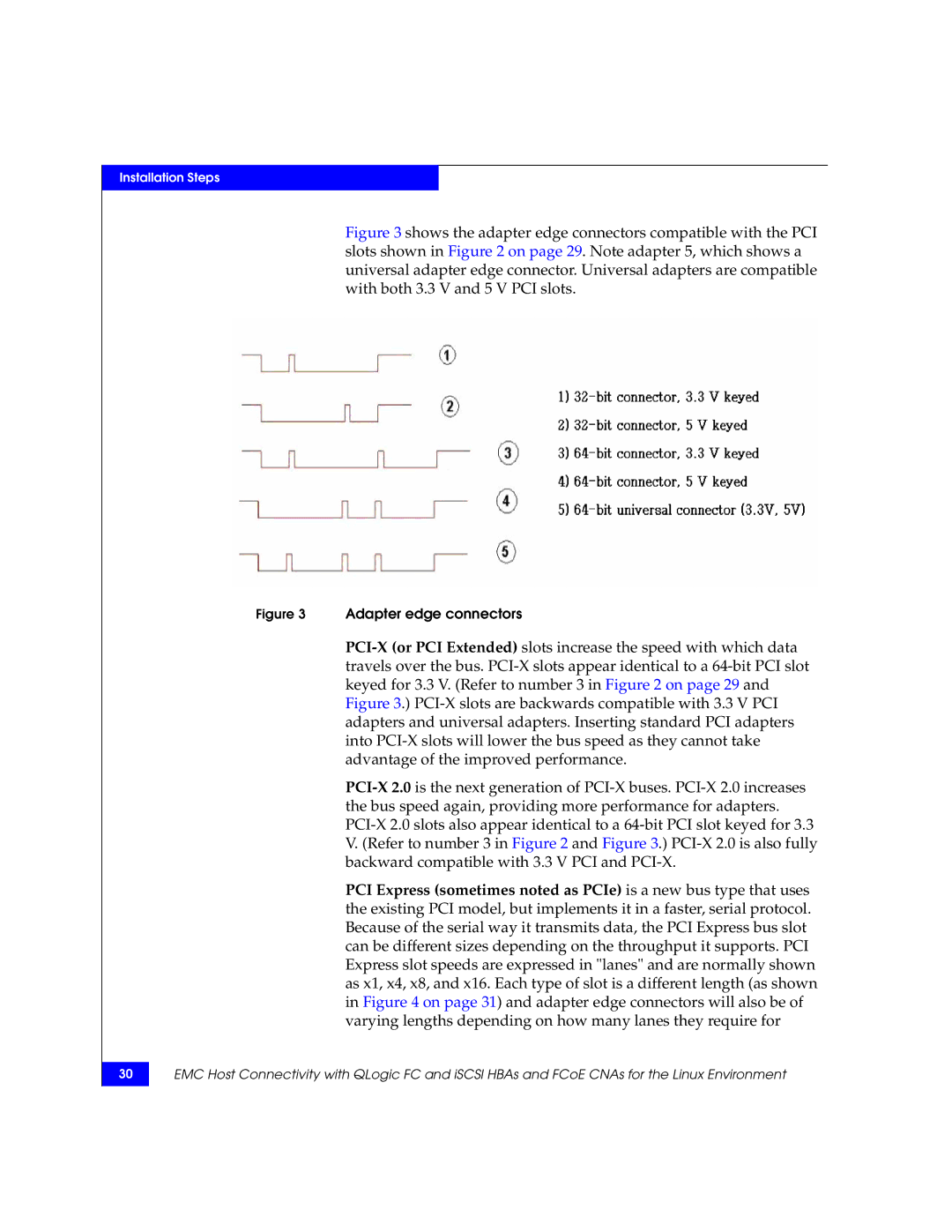
Installation Steps
Figure 3 shows the adapter edge connectors compatible with the PCI slots shown in Figure 2 on page 29. Note adapter 5, which shows a universal adapter edge connector. Universal adapters are compatible with both 3.3 V and 5 V PCI slots.
Figure 3 Adapter edge connectors
PCI Express (sometimes noted as PCIe) is a new bus type that uses the existing PCI model, but implements it in a faster, serial protocol. Because of the serial way it transmits data, the PCI Express bus slot can be different sizes depending on the throughput it supports. PCI Express slot speeds are expressed in "lanes" and are normally shown as x1, x4, x8, and x16. Each type of slot is a different length (as shown in Figure 4 on page 31) and adapter edge connectors will also be of varying lengths depending on how many lanes they require for
30
EMC Host Connectivity with QLogic FC and iSCSI HBAs and FCoE CNAs for the Linux Environment
